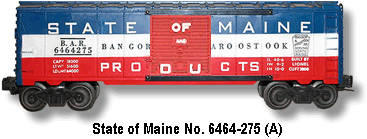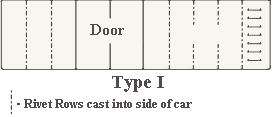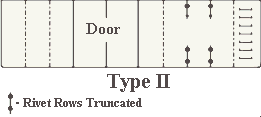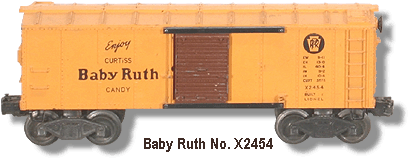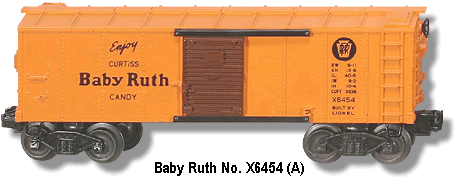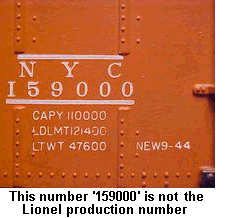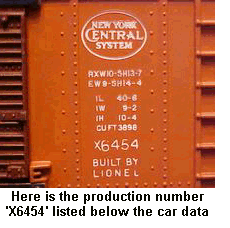These pages are best viewed at 1024 x 768 x 32 bit monitor resolution |
| This Identification Guide for Lionel Electric Trains covers the "Post-war Era" only from 1945 until 1969. |
|
|
|
|
|
|
|
|
At the bottom of this page are indexed those box cars that we’ve researched listed in Numerical order. |
|
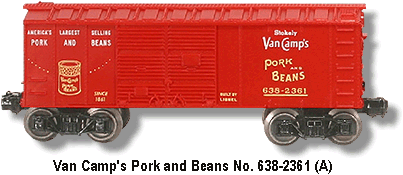 |
There would be two sub-types of the Type II body. Type IIa: has a solid catwalk. Type IIb: Has two plug marks that resulted from the change in the die that was needed to accomodate the No. 3357. |
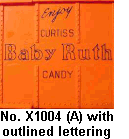 |
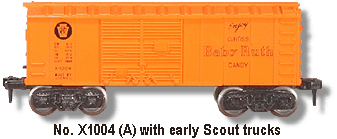 |
The first of these cars that were issued was the No. X1004 "Baby Ruth." In 1948 and 1949 it came with the lettering outlined. The No. X1004(D) version issued only in 1948 would come only in an uncataloged set with a No. 1101 locomotive.
|
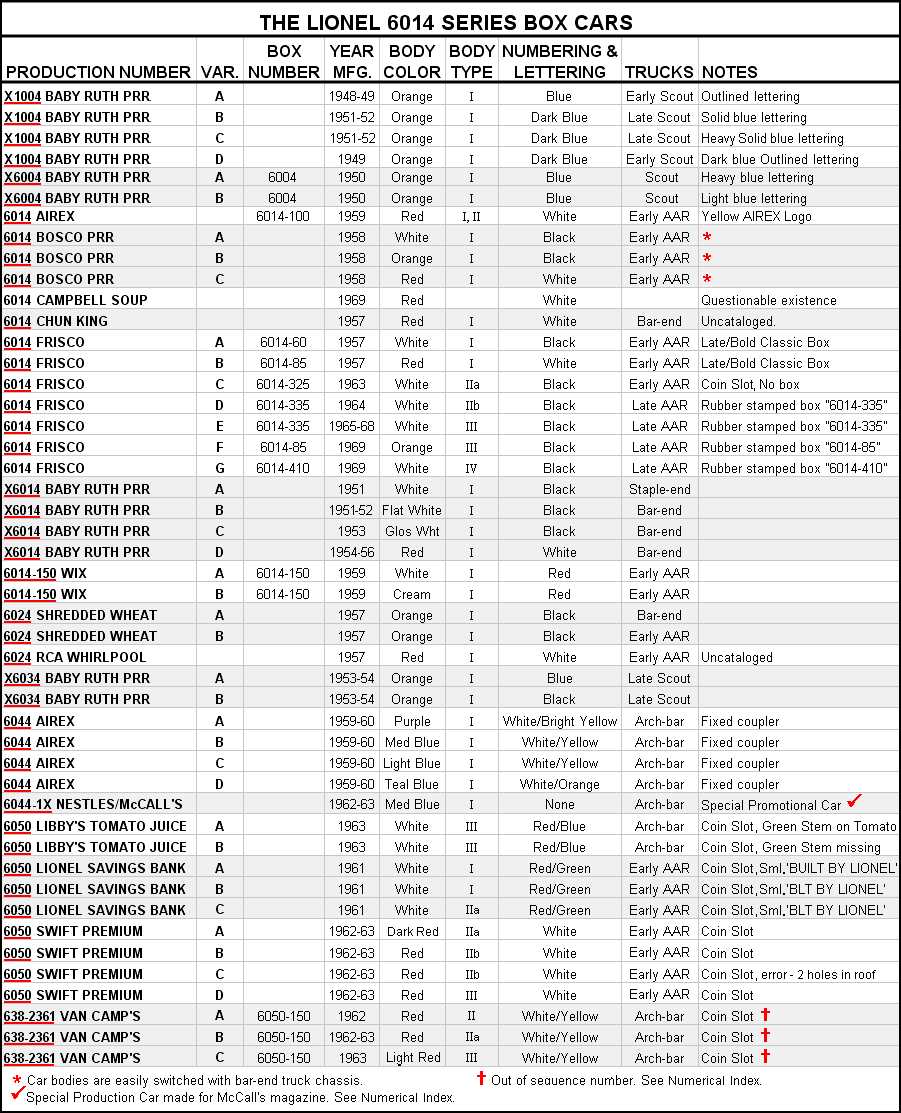 |
|
|
|
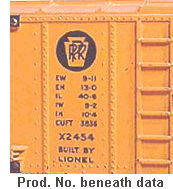 |
 |
|
|
||||
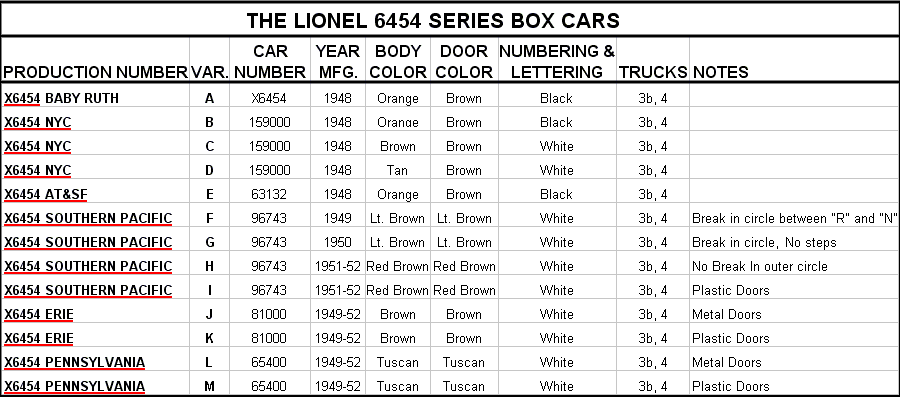 |
|
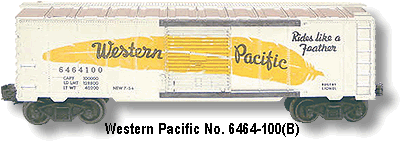 |
Collectors have identified over several hundred variations on these cars from different door types and rivet patterns on the sides, to the color of the paint and plastic that Lionel used in their manufacture. It is beyond the scope this identification guide to picture all of these variations. We will, however, show you most of the major ones, along with a few of the production errors that occurred along with references to the vairious body types shown below, so you’ll have an idea of what you’re getting into should you decide to collect these variations. |
| Readers who need more information are respectively urged to seek outside sources. Beginning in 1953, Lionel would offer one or more of these 10-1/2 inch cars up until the last year of the post-war period in 1969. See the Numerical Index for additional details about the individual box cars in this series. |
| 6464 SERIES DOOR TYPES |
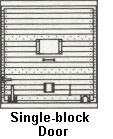 |
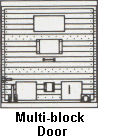 |
All of the very early 6464 cars came with Single-block doors. However, in 1955 to accommodate the paint scheme of the new No. 6464-275 State of Maine car, Lionel developed the Multi-block door. |
| Because the doors are easily interchangeable collectors place no extra value in any of these cars because of the door type. |
|
|
| 6464 SERIES BODY TYPES |
 |
 |
The first three columns are incomplete at the top. Column |
First seen in 1954. Columns |
 |
 |
Production started on this type sometime in late 1958. Four rivets down from the top in Column |
This type was produced starting in 1960. Same as Type III, but Column |
 |
 |
There were two different types of automobile box cars issued by Lionel during the Post War Era. The first smaller 9-1/2 inch cars were a carryover from the pre-war period. |
|
|
These box cars were carried over from pre-war production with the substitution of post-war trucks. |
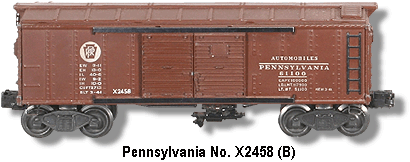 |
No. X2954 Pennsylvania Automobile Boxcar is a Pre-war car that is made out of Bakelite and painted tuscan. Never made during the post-war era, it is most likely that dealers or individuals have removed the pre-war trucks and substituted them with post-war. |
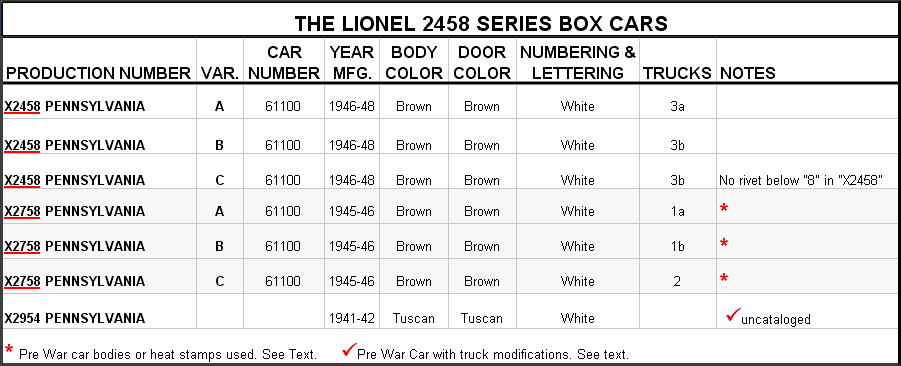 |
These cars originated with the mold that was used to create the 6464 cars that was modified to accomodate a second door. They began production in 1953 with the DARK BLUE Baltimore & Ohio No. 6468 and ended in 1958 with the No. 6468-25 New Haven. Even during this short period of time there were many variations that included one of the rarest of the post war cars. |
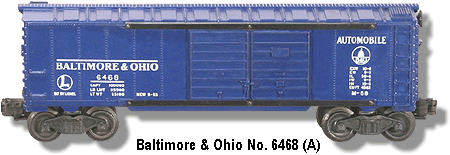 |
 | ||||
|
|
|
|
||
|
|
